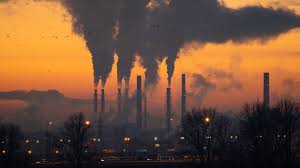
Study Reveals Shifting Trends in TBL Cancer Mortality: Tobacco-Related Deaths Decline, While Air Pollution Risks Surge
Tobacco-associated trachea, bronchus, and lung (TBL) cancer deaths are on the decline globally, but deaths linked to ambient air pollution are on the rise, according to new research published in the January issue of eClinicalMedicine.
The study, led by Dr. Chinmay T. Jani from the Sylvester Comprehensive Cancer Center at the University of Miami, analyzed global trends in TBL cancer mortality using age-standardized mortality rates (ASMRs) from the Global Burden of Disease database. The researchers focused on the 10 most populated countries, examining data from 1990 to 2019 to assess the impact of various risk factors, including tobacco use and exposure to particulate matter (PM).
Globally, the study found an 8% decrease in overall TBL cancer mortality during the study period. While mortality rates dropped for men, they increased for women. Notably, deaths tied to tobacco use and air pollution both decreased globally, but regional variations revealed more concerning trends. Tobacco-associated TBL cancer mortality rose in countries such as China and Indonesia, while PM-related deaths increased significantly in China, India, Pakistan, and Nigeria.
On a global scale, mortality linked to PM—a key component of ambient air pollution—rose by 25%. This stands in stark contrast to a 62% reduction in TBL cancer deaths caused by household air pollution, likely driven by cleaner indoor energy initiatives. China recorded the highest PM-associated TBL cancer mortality rate in 2019, at 8.8 deaths per 100,000 people—double the global average.
The study also highlighted declining asbestos-related TBL cancer mortality rates, which fell from 8.91 to 6.0 deaths per 100,000 people. However, the United States consistently reported rates twice the global average throughout the study period.
The findings underscore the evolving interplay between societal habits and environmental factors in shaping cancer risks. “The fluctuating trends in tobacco-associated and the concerning rise in air pollution-associated TBL cancer mortality highlight the complex interplay of societal and environmental factors,” the authors noted.
This research adds to growing concerns about the health impacts of air pollution, particularly in rapidly industrializing nations where PM levels remain alarmingly high. The results also signal progress in tobacco control measures but emphasize the need for continued vigilance in addressing both behavioral and environmental risk factors to combat the global burden of TBL cancer.